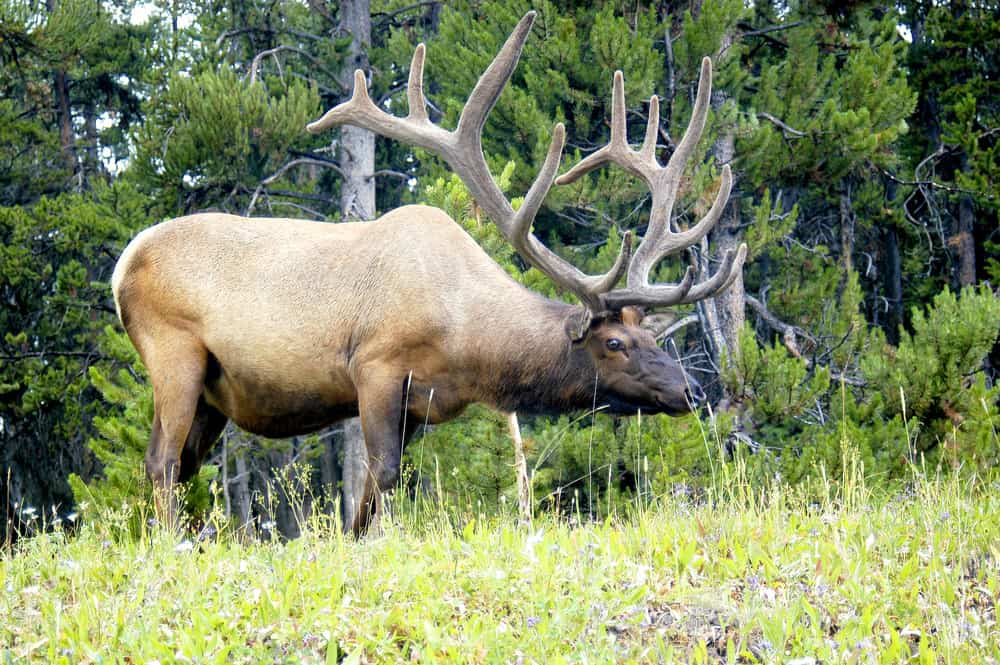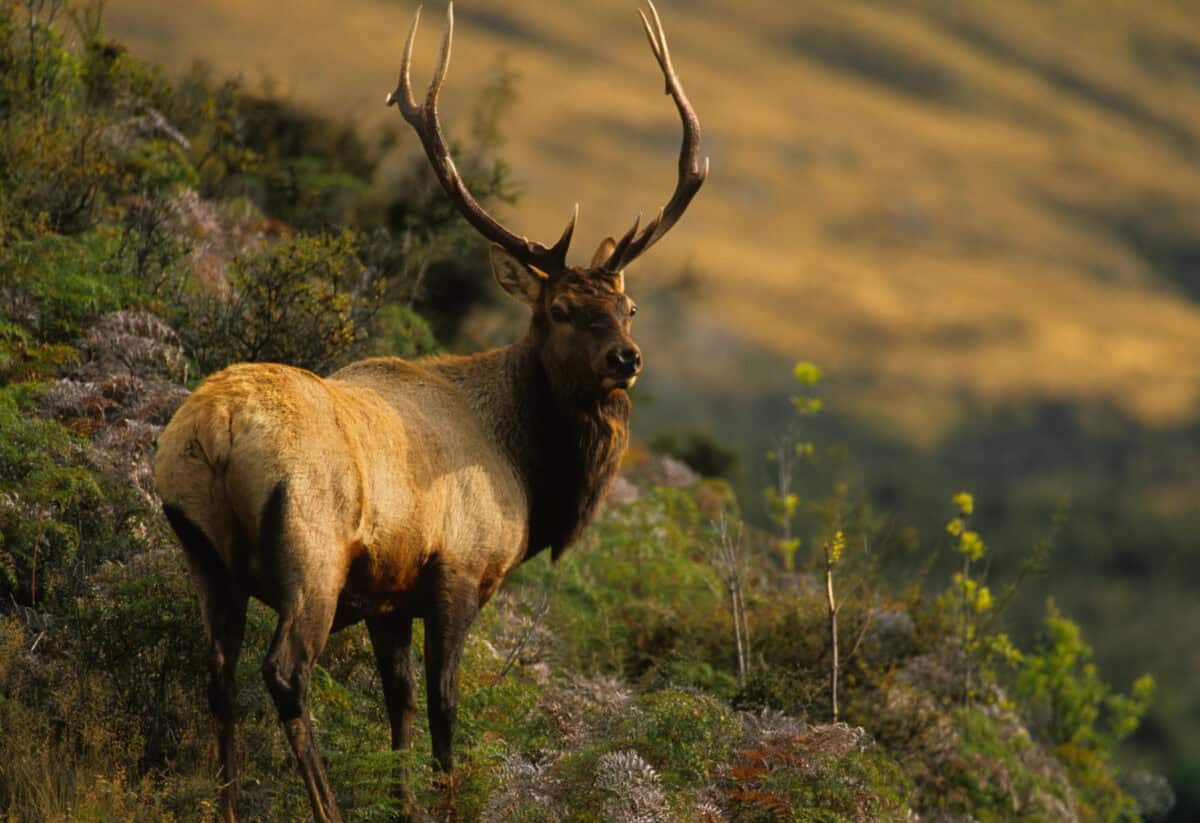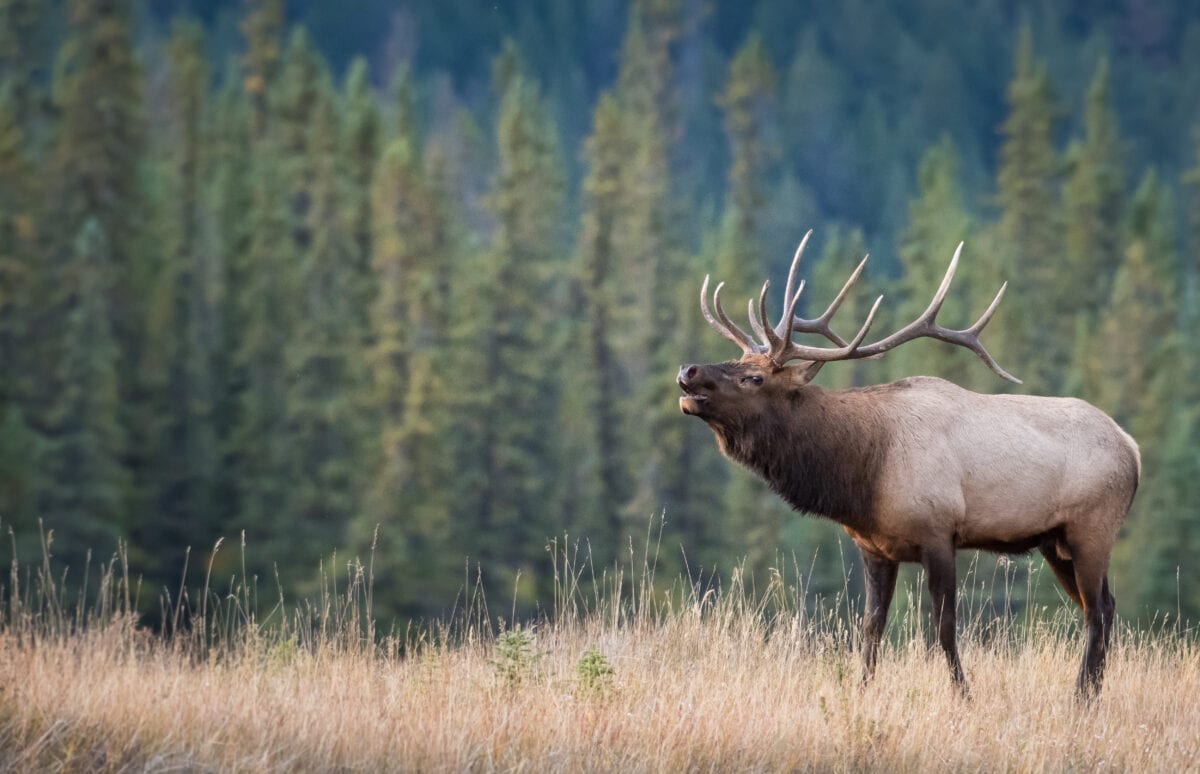Nestled in the heart of Pennsylvania lies an extraordinary natural treasure that few Americans are aware of – the Elk State Forest. This sprawling woodland is not only a testament to the success of wildlife conservation in America but also houses the largest wild elk herd east of the Mississippi River. The majestic Pennsylvania elk, once extirpated from the state in the late 1800s, have made a remarkable comeback through careful reintroduction and management efforts. Today, visitors from across the country journey to this special corner of the Keystone State to witness these magnificent creatures in their natural habitat, especially during the fall rutting season when bulls bugle their haunting calls across the forested valleys.
The Rich History of Pennsylvania’s Elk Herd

The story of Pennsylvania’s elk herd is one of loss and triumphant return. Eastern elk (Cervus canadensis canadensis) were once abundant throughout the eastern United States, including Pennsylvania. However, by the 1870s, unregulated hunting and habitat destruction led to their complete disappearance from the state. Recognizing this loss, the Pennsylvania Game Commission initiated a bold reintroduction program in 1913, bringing 50 Rocky Mountain elk (Cervus canadensis nelsoni) from Yellowstone National Park to the wilds of north-central Pennsylvania.
Despite initial challenges and fluctuating population numbers throughout the 20th century, dedicated conservation efforts gradually stabilized and expanded the herd. Today, over 1,400 elk roam the Pennsylvania Wilds, with their nucleus centered in and around Elk State Forest, making it the largest wild elk herd in the northeastern United States.
The Geography and Ecology of Elk State Forest

Spanning approximately 200,000 acres across Cameron, Elk, Potter, McKean, and Clinton counties, Elk State Forest provides the perfect habitat for these magnificent creatures. The landscape is characterized by a mosaic of dense woodlands, open meadows, and river valleys that form a rich tapestry of ecosystems. The forest sits within the larger Pennsylvania Wilds region, an area encompassing over 2 million acres of public lands. The topography features rolling hills, steep ravines, and plateaus ranging from 1,000 to 2,300 feet in elevation.
This diverse terrain, combined with the region’s four distinct seasons, creates an ideal environment for elk. The forest is dominated by northern hardwoods including maple, cherry, and beech, interspersed with conifer stands of eastern hemlock and white pine. Carefully managed forest clearings and food plots provide the edge habitat and forage that elk prefer, while the dense forest offers shelter during harsh winter months.
The Magnificent Pennsylvania Elk

Pennsylvania’s elk are impressive animals that command attention with their sheer size and presence. Bulls (males) can weigh up to 1,000 pounds and stand 5 feet tall at the shoulder, making them one of the largest land mammals in the eastern United States. Their most distinctive feature is their impressive antlers, which can span up to 4 feet across and weigh up to 40 pounds. These antlers are shed and regrown annually in a remarkable biological process.
Cows (females) are smaller, typically weighing between 500-600 pounds, but are equally majestic in their own right. The Pennsylvania herd displays the characteristic brownish coat of Rocky Mountain elk, often with lighter tan rumps and darker necks and legs. Their adaptability to the Pennsylvania landscape demonstrates their resilience, having evolved slightly different behavioral patterns than their western counterparts to thrive in the more densely forested eastern habitat.
The Annual Elk Rut: Nature’s Grand Spectacle

September and October mark one of nature’s most dramatic displays as the elk enter their breeding season, known as the rut. During this time, bull elk engage in fierce competitions for mating rights, beginning with their haunting bugle calls that echo through the valleys at dawn and dusk. These distinctive vocalizations, which start as deep grunts and rise to high-pitched screams before descending again, serve to announce a bull’s presence and challenge rivals.
Bulls will also display their dominance through posturing, parallel walking, and, if necessary, physical combat. These battles involve bulls locking antlers and pushing against each other in tests of strength that can sometimes result in serious injury. The spectacle draws thousands of wildlife enthusiasts to Elk State Forest each fall, making it the peak tourism season for the region. For many, witnessing a bull elk bugle at close range ranks among the most memorable wildlife experiences in the eastern United States.
Elk Management and Conservation Efforts

The success of Pennsylvania’s elk herd is no accident but the result of careful scientific management and conservation. The Pennsylvania Game Commission employs a comprehensive elk management plan that balances herd health, habitat needs, and human-elk interactions. Population monitoring includes annual aerial surveys, collar tracking of select individuals, and health assessments. Habitat management is equally important, with the Pennsylvania Department of Conservation and Natural Resources (DCNR) and the Game Commission collaborating on creating and maintaining optimal elk habitat through controlled burns, forest management, and food plot cultivation.
A limited hunting season was established in 2001 to help manage population numbers, with a highly regulated lottery system issuing only a small number of elk tags each year. The proceeds from this program help fund continued conservation efforts. Additionally, ongoing research on elk movement patterns, nutrition, and disease monitoring ensures the long-term viability of this treasured wildlife resource.
The Economic Impact of Elk Tourism

The presence of wild elk has transformed the economy of north-central Pennsylvania, a region that once depended heavily on resource extraction industries like coal and timber. Today, wildlife tourism centered around the elk herd generates an estimated $30 million annually for the local economy. The small town of Benezette, often called the “Elk Capital of Pennsylvania,” has developed from a quiet rural community into a wildlife tourism destination.
Lodging options ranging from rustic cabins to bed and breakfasts are often booked months in advance during the fall rut season. Restaurants, gift shops, guide services, and other tourism-related businesses have flourished, providing much-needed employment in a region that has faced economic challenges. The Elk Country Visitor Center, a $12 million facility opened in 2010, receives over 400,000 visitors annually and serves as the educational hub for elk tourism. This economic renaissance demonstrates how conservation can create sustainable economic opportunities while preserving natural heritage.
Viewing Opportunities and Best Practices

For visitors hoping to glimpse these magnificent animals, Elk State Forest offers numerous viewing opportunities. The Elk Scenic Drive, a 127-mile route through the Pennsylvania Wilds, connects multiple viewing areas specifically designed for elk observation. Prime locations include Winslow Hill, Dents Run, Hicks Run, and areas around Benezette. The best times for viewing are dawn and dusk when elk are most active, particularly during the September-October rut season and in April-May when new calves can be spotted.
The Elk Country Visitor Center provides educational programs, viewing blinds, and interactive exhibits to enhance the experience. Responsible wildlife viewing is essential for both human safety and elk welfare. Visitors should maintain a minimum distance of 100 yards from elk, use binoculars or spotting scopes for close-up views, refrain from approaching or feeding the animals, and stay in vehicles or designated viewing areas. These practices help ensure that elk remain wild and that the viewing experience remains sustainable for future generations.
Challenges and Human-Elk Conflicts

Despite the success story of elk reintroduction, the coexistence of humans and these large mammals presents ongoing challenges. As the herd has grown and expanded its range, conflicts with agriculture have increased. Elk can cause significant damage to crops, particularly corn, alfalfa, and fruit orchards. The Game Commission addresses these issues through a damage mitigation program that includes fencing subsidies, deterrents, and in some cases, targeted removal of problem animals. Road safety is another concern, with approximately 15-25 elk-vehicle collisions occurring annually.
The state has installed wildlife crossings and warning signs in high-risk areas to reduce these incidents. Disease monitoring is yet another challenge, with chronic wasting disease (CWD) being a particular concern. Though CWD has not yet been detected in Pennsylvania’s elk herd, its presence in the state’s deer population has led to increased surveillance and preventive measures. Balancing the growing popularity of elk tourism with the need to maintain the wild character of the herd represents perhaps the most nuanced challenge, requiring ongoing education and management.
The Ecosystem Benefits of a Healthy Elk Population

Elk serve as a keystone species within the forest ecosystem, playing multiple ecological roles that benefit the entire biological community. Their grazing habits help maintain meadow and forest edge habitats, preventing succession to closed-canopy forest and thereby preserving habitat diversity that benefits numerous other species. Through their movement patterns, elk help disperse seeds across the landscape, contributing to plant diversity.
Their browsing on young trees naturally thins forest undergrowth, which can reduce competition and promote healthier forest stands. Even in death, elk provide food for scavengers and decomposers, returning nutrients to the soil. The reintroduction of elk has helped restore ecological processes that were lost when the species was extirpated, moving the ecosystem closer to its historical functioning. Additionally, as a large herbivore, elk can influence forest composition by selectively browsing certain tree species, potentially altering long-term forest succession patterns. These ecological effects ripple through the food web, affecting everything from soil microbes to predators.
Seasonal Life Cycle of Pennsylvania’s Elk

The lives of Pennsylvania’s elk follow a rhythm dictated by the changing seasons. Winter finds the herd congregating in sheltered valleys and south-facing slopes where they can find browse and escape the harshest weather. During this challenging time, they primarily feed on woody browse including tree buds, twigs, and bark. As spring arrives, the elk disperse and seek out fresh green vegetation, with cows separating from the herd in May and June to give birth to their calves in secluded areas.
Calves, weighing about 35 pounds at birth, can stand within 20 minutes and begin to follow their mothers within a few days. Summer sees elk feeding heavily on lush vegetation to build fat reserves, while bulls’ antlers grow rapidly under a velvet covering that will be shed by August. In early fall, bulls establish harems of cows and the dramatic rut begins. By November, the rut concludes, and the cycle begins anew as the herd prepares for winter. This annual pattern has evolved to maximize survival and reproductive success in the northeastern forest environment.
Comparing Pennsylvania’s Elk to Western Herds

While Pennsylvania’s elk are descended from Rocky Mountain stock, a century of adaptation to eastern forests has led to some notable differences from their western counterparts. Pennsylvania elk tend to live in smaller groups and are more adaptable to densely forested habitats than western elk, which often prefer more open landscapes. Their movement patterns differ as well; while western elk often make significant elevational migrations between summer and winter ranges, Pennsylvania elk generally make shorter seasonal movements.
Nutritionally, eastern elk rely more heavily on browse (woody vegetation) and forest foods like acorns compared to the grass-dominated diet of many western herds. Research suggests that Pennsylvania bulls may reach slightly smaller body and antler sizes than those in optimal western habitats, likely due to differences in nutrition and genetics. However, the Pennsylvania herd shows excellent health metrics and reproduction rates, indicating successful adaptation to their eastern home. These differences highlight the remarkable adaptability of elk as a species and provide interesting research opportunities for wildlife biologists studying large mammal ecology.
The Future of Pennsylvania’s Elk Herd

Looking ahead, the future of Pennsylvania’s elk herd appears promising yet faces important challenges. Current management goals aim to maintain a stable population of approximately 1,200-1,400 animals while potentially allowing for modest range expansion in suitable habitat. Climate change presents an uncertain variable, potentially altering forest composition and forage availability in the decades ahead. Continued human development and fragmentation of the landscape could impact elk movement corridors and habitat quality. Disease threats, particularly chronic wasting disease, remain a serious concern requiring ongoing vigilance.
The Pennsylvania Game Commission’s adaptive management approach allows for adjustments based on emerging research and changing conditions. Technological advances in monitoring, including GPS collaring and genetic analysis, provide increasingly detailed information to guide conservation decisions. Public education and stakeholder involvement remain critical components of successful elk management. With continued scientific management and public support, Pennsylvania’s elk herd stands as a conservation success story with a bright future, offering coming generations the opportunity to experience these magnificent animals in their eastern woodland home.
Conclusion

The story of Pennsylvania’s elk herd represents one of America’s most successful wildlife recovery efforts, transforming from complete extirpation to the largest wild elk population in the eastern United States. Elk State Forest stands as the crown jewel of this conservation triumph, providing critical habitat for these magnificent animals while offering unparalleled viewing opportunities for wildlife enthusiasts.
The economic revitalization of rural communities through sustainable wildlife tourism demonstrates how conservation can benefit both natural ecosystems and human communities. As we look to the future, the continued success of Pennsylvania’s elk herd will depend on maintaining the delicate balance between wildlife needs and human interests through science-based management, public education, and a shared commitment to preserving this natural heritage. The bugling of bull elk across the valleys of north-central Pennsylvania each autumn stands as a powerful reminder of what can be accomplished when we commit to restoring and protecting our natural treasures.
- Top Jungle Treks for Spotting Jaguars and Tapirs - June 27, 2025
- Which Pixar Animals Reflect True Wildlife Instincts? - June 27, 2025
- The Friendliest Dog Breeds for Families in Ohio - June 27, 2025

